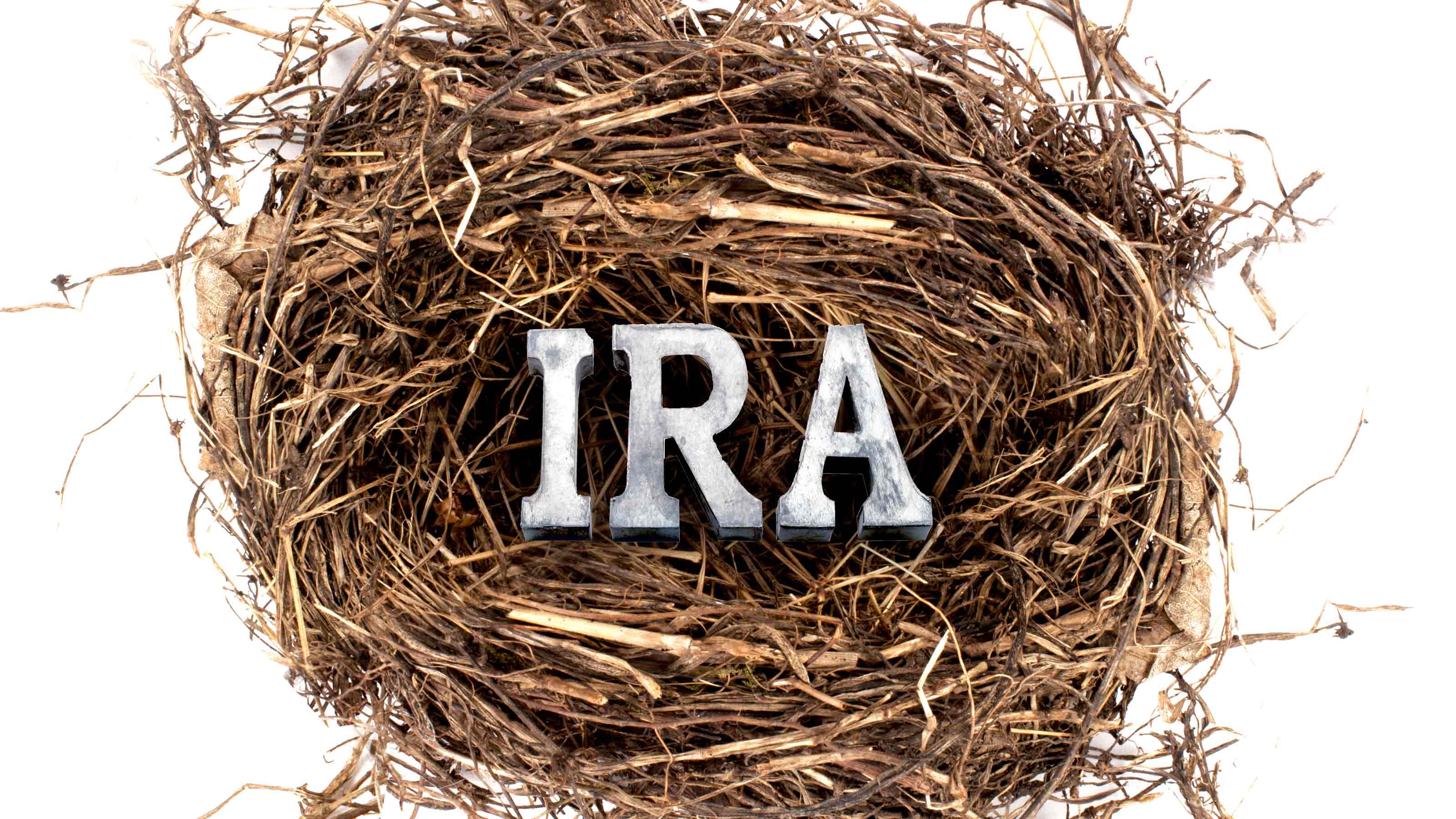There's Still Time to Contribute to Your IRA and Cut Your Taxes
Although you need to act quickly, you still have time to make a 2021 IRA contribution and lower your tax bill.


As we approach the end of this year's tax filing season, make sure you haven't overlooked one of the best ways to cut your tax bill and secure your future — contributing to a traditional IRA. (There is no upfront tax break for funding a Roth IRA.)
You can make an IRA contribution for the 2021 tax year up until this year's tax return filing deadline, which is April 18 for most people. That doesn't leave much time, but if you have some extra income go ahead and deposit it into an IRA account today before time expires. (Just make sure the IRA administrator knows it's for the 2021 tax year.)
And what about those tax savings? Well, depending on your income, you may be able to deduct your IRA contribution on your 2021 tax return. To contribute to a traditional IRA, you or your spouse must have earned income from a job. But, otherwise, you may be able to deduct contributions to an IRA even if you or your spouse are covered by another retirement plan at work. Plus, starting in 2020, seniors age 70½ and older with earned income can now contribute to a traditional IRA, too.

Sign up for Kiplinger’s Free E-Newsletters
Profit and prosper with the best of expert advice on investing, taxes, retirement, personal finance and more - straight to your e-mail.
Profit and prosper with the best of expert advice - straight to your e-mail.
Here's some more good news: The IRA deduction is an "above the line" deduction, meaning you don't have to itemize your deductions to claim it. It will reduce your adjusted gross income (AGI) dollar-for-dollar, lowering your tax bill. And your lower AGI could make you eligible for other tax breaks, which are tied to income limits.
Who Qualifies for the IRA Deduction
If you're single and don't participate in a retirement plan at work, you can make a tax-deductible IRA contribution for 2021 of up to $6,000 ($7,000 if you're 50 or older) regardless of your income. If you're married and your spouse is covered by a workplace-based retirement plan but you're not, you can deduct your full IRA contribution as long as your joint AGI doesn't top $198,000 for 2021. You can take a partial tax deduction if your combined income is between $198,000 and $208,000.
But even if you do participate in a retirement plan at work, you can still deduct up to the maximum $6,000 IRA contribution ($7,000 if you're 50 or older) if you're single and your 2021 income is $66,000 or less ($105,000 if married filing jointly). And you can deduct some of your IRA contribution if you're single and your income is between $66,000 and $76,000, or if you're married and your income is between $105,000 and $125,000.
Spouses with little or no earned income for 2021 can also make an IRA contribution of up to $6,000 ($7,000 if 50 or older) as long as their spouse has sufficient earned income to cover both contributions. The contribution is tax-deductible as long as your household income doesn't exceed the limits for married couples filing jointly.
Double Tax Break with the Saver's Credit
Some low- and moderate-income taxpayers get an extra tax break on their 2021 return for contributing to an IRA or other retirement account.
In addition to the usual IRA deduction, you may qualify for a Retirement Savers tax credit of up to $1,000 ($2,000 for joint filers) for contributions to an IRA or other retirement tax plan. (A tax credit, which reduces your tax bill dollar-for-dollar, is more valuable than a deduction, which merely reduces the amount of income that is taxed.)
The actual amount of the credit depends on your income. It ranges from 10% to 50% of the first $2,000 contributed to an IRA or other retirement account. To be eligible, your 2021 income can't exceed $33,000 if you're single, $49,500 if you're the head of a household with dependents, or $66,000 if you're married filing jointly. The lower your income, the higher the credit. But you can't claim the Retirement Savers credit if you're under 18, a student, or can be claimed as a dependent on someone else's tax return.
File an Amended Return
What if you already filed your 2021 tax return? No problem – just file an amended tax return after April 18 to claim your new or increased tax breaks. You generally have three years from the date you filed your original return or two years from the date you paid any tax due to file an amended return (go with whichever date is later).
Use Form 1040-X to file an amended return. You can mail in a paper return or file electronically. We recommend e-filing your amended return, since it will be processed much faster. If you're changing your IRA deduction, make sure you write "IRA deduction" and the amount of the increase or decrease in Part III of the form. Once you file an amended return, you can track its status online using the IRS's "Where's My Amended Return?" tool or by calling 866-464-2050.
Get Kiplinger Today newsletter — free
Profit and prosper with the best of Kiplinger's advice on investing, taxes, retirement, personal finance and much more. Delivered daily. Enter your email in the box and click Sign Me Up.

Block joined Kiplinger in June 2012 from USA Today, where she was a reporter and personal finance columnist for more than 15 years. Prior to that, she worked for the Akron Beacon-Journal and Dow Jones Newswires. In 1993, she was a Knight-Bagehot fellow in economics and business journalism at the Columbia University Graduate School of Journalism. She has a BA in communications from Bethany College in Bethany, W.Va.
-
 Kentucky Tax Deadline Extension Might Cost You More Money: What to Know
Kentucky Tax Deadline Extension Might Cost You More Money: What to KnowState Taxes Kentucky flooding and storms caused the IRS and state to extend the 2025 tax filing deadline. But should you file later?
By Kate Schubel Published
-
 Seven Tasks Retirees Can Do With Online Banking or a Mobile Banking App
Seven Tasks Retirees Can Do With Online Banking or a Mobile Banking AppRetirees can do more than check their bank account balance online.
By Donna Fuscaldo Published
-
 Did Florida’s Chance at $1,000 in Property Tax Rebates Vanish?
Did Florida’s Chance at $1,000 in Property Tax Rebates Vanish?State Taxes The Florida Legislature bypassed Gov. Ron DeSantis’ wish to cut property taxes and instead voted to lower the state’s sales tax.
By Gabriella Cruz-Martínez Published
-
 How Caregivers for Adults Can Save on Taxes in 2025
How Caregivers for Adults Can Save on Taxes in 2025Tax Breaks Caring for your parent or spouse can be stressful, but the IRS offers tax breaks for qualifying taxpayers. Here they are.
By Kate Schubel Published
-
 New South Carolina Income Tax Cut Might Eat Your Cash
New South Carolina Income Tax Cut Might Eat Your CashState Taxes South Carolina’s flat income tax bill could have the majority of residents paying higher income taxes. Find out how.
By Kate Schubel Published
-
 U.S. Treasury to Eliminate Paper Checks: What It Means for Tax Refunds, Social Security
U.S. Treasury to Eliminate Paper Checks: What It Means for Tax Refunds, Social SecurityTreasury President Trump signed an executive order forcing the federal government to phase out paper check disbursements by the fall.
By Gabriella Cruz-Martínez Published
-
 IRS Layoffs Spark Delays, Doubt This Tax Season
IRS Layoffs Spark Delays, Doubt This Tax SeasonTax Season Tax experts say Trump’s downsizing of the IRS is already causing problems.
By Gabriella Cruz-Martínez Last updated
-
 States with the Highest Income Tax Rates for Retirees
States with the Highest Income Tax Rates for RetireesState Tax You may reconsider living and retiring in one of these states due to high taxes.
By Kate Schubel Last updated
-
 AI Tax Scams Target Middle and Older Adults: What to Know
AI Tax Scams Target Middle and Older Adults: What to KnowScams Whether you’re a retiree or Gen Z, scammers can gouge big financial losses with the help of artificial intelligence.
By Kate Schubel Published
-
 Tax-Deductible Home Improvements for Retirement in 2025
Tax-Deductible Home Improvements for Retirement in 2025Retirement Taxes Your aging-in-place plan could benefit from the medical expense tax deduction. But watch out for capital gains and property taxes.
By Kate Schubel Published